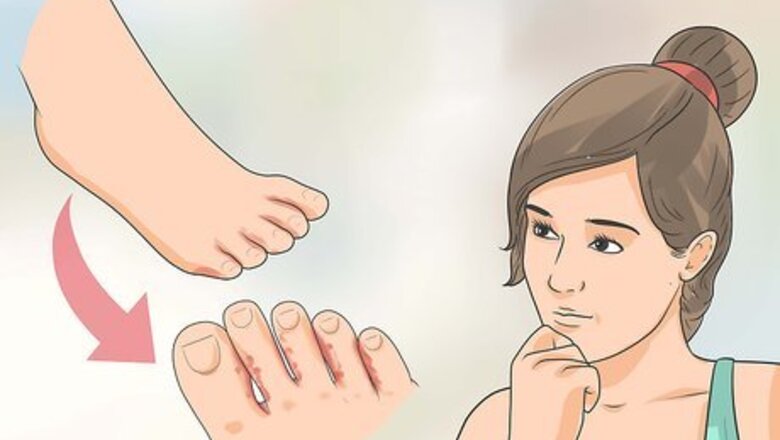
views
X
Trustworthy Source
Mayo Clinic
Educational website from one of the world's leading hospitals
Go to source
Diagnosing Athlete's Foot
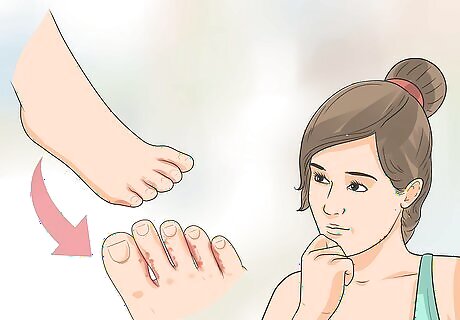
Determine if you are at risk for athlete's foot. If you come in contact with a contaminated surface and then provide a good environment for fungus to grow, you be at increased risk for developing athlete's foot. Contaminated surfaces may include swimming pools, locker rooms or showers where you walk barefoot after someone with an athlete's foot infection. Certain behaviors can also predispose you to developing a fungal infection on your feet or toes, such as: Wearing tight shoes with limited air flow. Wearing shoes with plastic liners. Leaving your feet wet or moist for long periods of time. Having sweaty feet often. Developing a nail or skin injury.
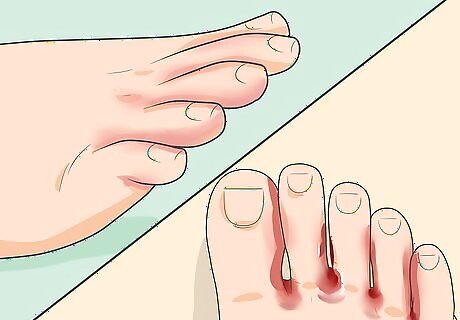
Know the symptoms of athlete's foot. Most of these symptoms revolve around the skin irritation that the fungus causes. There are three kinds of athlete's foot that may have slightly different symptoms to look out for. Symptoms can be mild, moderate or even severe. Some symptoms, such as itching, can become worse as soon as you remove socks and shoes. Symptoms of athlete's foot can include: Itching and burning. Peeling or flaking skin. Cracking skin. Bleeding. Pain of the infected area. Areas of skin that look pinker/redder than the rest of the foot (if you have light skin).
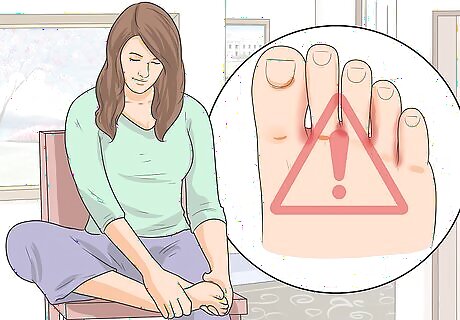
Examine your feet carefully for signs of athlete's foot. Look at both feet close up under good lighting so you won't miss anything. Pay special attention to areas between the toes and the soles of your feet. If you notice any skin that is red and peeling or dry flakes on your skin and are experiencing some of the symptoms mentioned in this article, you should begin treatment.
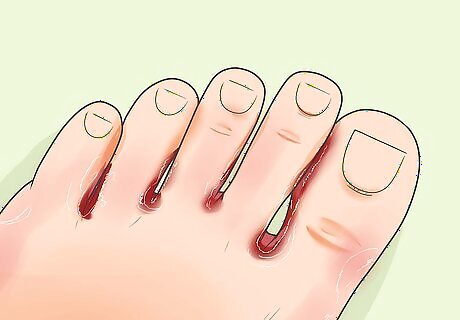
Look for a toe web infection. Toe web infection is a form of athlete's foot that is frequently found between the fourth and fifth toes. You will need to look for signs of athlete's foot in these areas, such as scaly, peeling or cracking skin. Bacteria can also infect the area causing further damage to the skin.
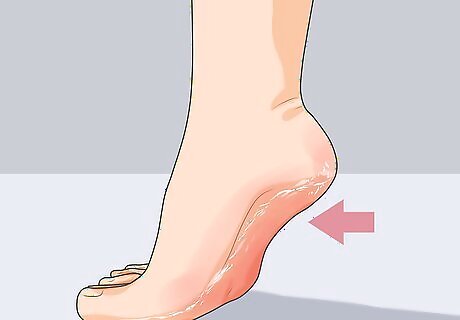
See if you might have a moccasin-type infection. Moccasin-type infection may begin as a very mild thickening or cracking on the heel or other areas on the bottom of your foot. It can gradually become worse, infecting toenails so that they also thicken, crack or fall out. Be sure to check your toenails for signs of irritation or fungal infection.
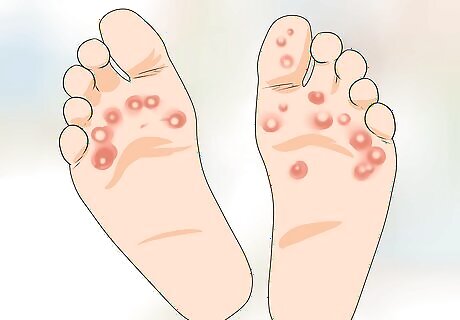
Check for a vesicular infection. This type of fungal infection can cause fluid-filled blisters to occur suddenly on your foot. The blisters can usually be found on the bottom of your foot. A bacterial infection can coincide with your vesicular type infection, making symptoms much worse.
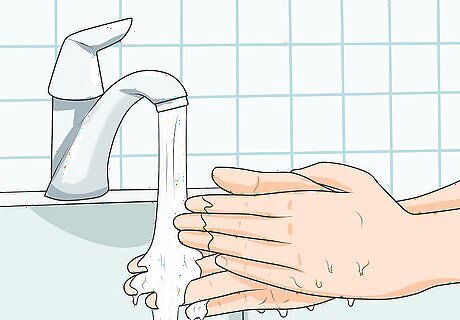
Be aware that athlete's foot can spread to other areas of the body. Fungal infections are opportunistic and can appear anywhere that conditions allow them to thrive. You should always wash your hands thoroughly after handling infected areas on your feet. Fungal infections can spread to your hands, especially if you pick at areas on your foot infected with athlete's foot. Athlete's foot can spread to your toenails and fingernails. It is more difficult to treat toenail infections than skin infections on your foot. Athlete's foot can develop into jock itch when it infects your groin area. Know that the fungus that causes athlete's foot can contaminate materials like a towel or be transferred by your hands if, for example, you touch your infected foot and then scratch your groin area.
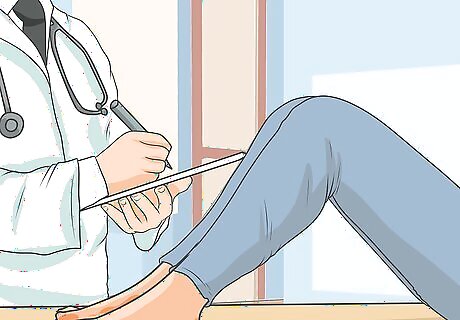
See a doctor. A medical provider can often diagnose athlete's foot by examining the infected area of your foot. They can look for telltale visual signs that point to the fungal infection. Your doctor may also perform some tests to confirm a diagnosis, such as: Taking skin scrapings from the infected area in order to take a look at the cells under a microscope. Using a black-light to look at your feet and see if the light shows fungus on your foot. Sending a sample of skin cells to the laboratory for further testing.
Treating Athlete's Foot
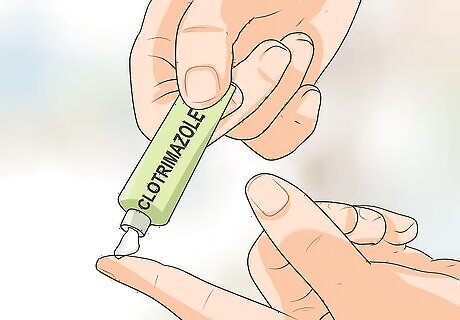
Choose an over-the-counter topical medicine. There are many nonprescription antifungal creams, solutions, gels, sprays, ointments, swabs or powders that can be effective for treating athlete's foot. Some take one to two weeks to work, while others must be used for four to eight weeks before they get rid of the fungal infection. Faster-acting medications tend to be a little more expensive than the others but require less medication to finish treating athlete's foot. Over-the-counter topical antifungals usually contain one of the following as its active ingredient: clotrimazole, miconazole, terbinafine or tolnaftate. Treatment usually lasts from one to eight weeks, depending on the medication you choose.
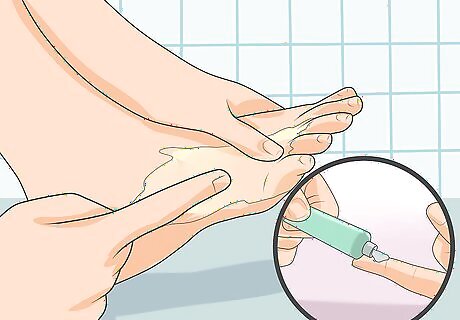
Apply a topical antifungal. Wash your hands before and after treating athlete's foot. The area should be dry before you place the medication directly onto the rash as well as some surrounding areas. Even if your rash disappears, the fungus could still be on your skin, so keep using the medicine. It is a good idea to continue using anti-fungal powders and creams for one to two weeks after fungus has cleared up to ensure that the infection does not return. Always use the medication as you are instructed on the box, tube or pamphlet that comes with the medication. Don't skip doses, and don't finish using the medication before the directions recommend—even if symptoms disappear before then. Never tear off skin that is flaking. You could damage healthy surrounding skin and spread the fungal infection.
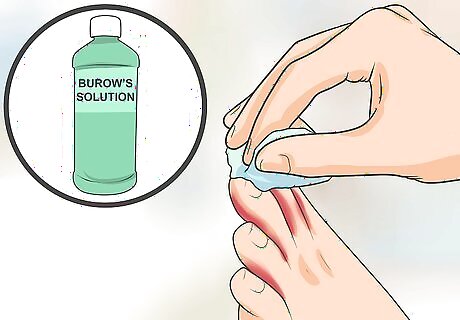
Use Burow's solution. This solution sometimes used for skin conditions is usually available over-the-counter and has astringent and antibacterial properties. It can be particularly useful for treating a vesicular infection. Follow the directions, and soak your foot several times a day for at least three days. When all the blister fluid has dried up, you can move on to applying an antifungal topical medication to the infected area. You can also put Burow's solution on a cloth or other compress and apply it to the infected area. Another common remedy you can try is a solution that is 2/3 warm water and 1/3 vinegar.
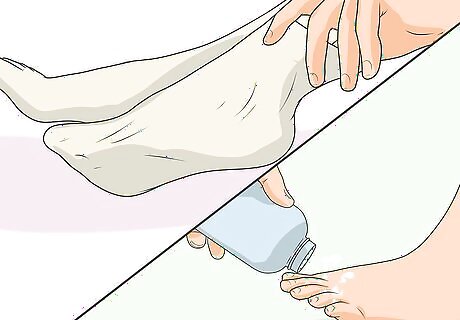
Make sure that your feet are as dry as possible. Fungi thrive in warm, damp environments. Your feet tend to be an ideal breeding ground for athlete's foot. Try hard to ensure that your feet are dry throughout the day. Especially be sure to dry between your toes any time your feet get wet or after you shower. Change your socks and your shoes as often as you need to keep your feet dry. If your socks get damp at all, it's time to change them. Put on clean, cotton socks every time. Synthetic fibers aren't as good at wicking away moisture as cotton is. One trick is to take a silica packet (they often come in beef jerky packets, for example) and stick it inside your sock for the day. It may be a little uncomfortable, but silica is great at wicking away moisture — that's why they're put to use in beef jerky packets. You can use talcum or antifungal powder on your feet and inside your shoes to absorb moisture and help combat fungal infections. Wear open-toed shoes or sandals as much as possible.
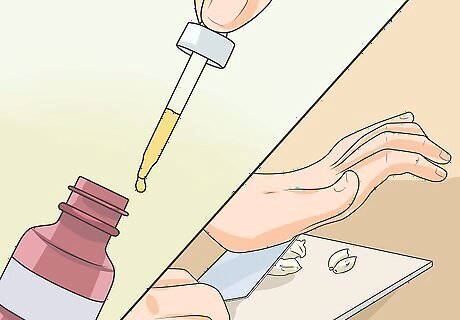
Use tea tree oil or garlic. Both of these natural remedies may help treat athlete's foot if applied regularly. This is because both tea tree oil and garlic contain antifungal compounds useful for killing fungal infections. Though tea tree oil and garlic may reduce symptoms of athlete's foot, the infection may not be completely destroyed. Be aware that these natural remedies have not been proven effective by scientific testing. Evidence supporting the use of tea tree oil and/or garlic is anecdotal, or based on personal accounts.
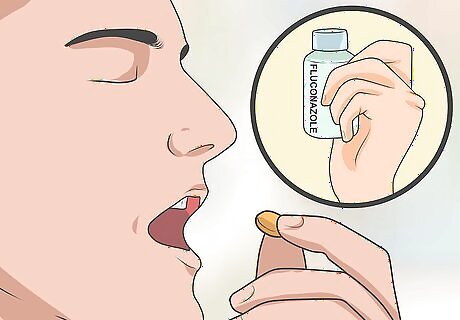
Take prescription medication. If you have a very severe or resistant fungal infection, a doctor can prescribe prescription topical or oral (by mouth) antifungal medications. Some prescription antifungals can cause side effects. Talk to your doctor about the medications he or she wants you to take. Prescription strength topical antifungals include medications that may contain butenafine, clotrimazole or naftifine. The pill form of prescription antifungals include fluconazole, itraconazole and terbinafine. You usually have to take these pills for two to eight weeks, depending on which medication you are prescribed.
Preventing Athlete's Foot

Wear sandals or flip-flops when at a public pool or shower. Since the athlete's foot fungus is infectious, create a barrier between your feet and a potential vector for transmission. Never walk barefoot in public places, especially areas that tend to be warm and damp. Always dry feet off completely after bathing or swimming before putting your shoes back on. Be sure to regularly disinfect your shower floor, since foot fungus thrives in a warm, wet environment. If you had the fungus on your feet then showered, the fungus could continue to live in your shower, reinfecting you or infecting any family members who share your shower.
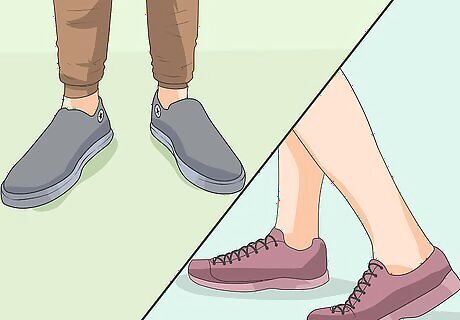
Alternate your shoes every day. Air-dry shoes for 24 hours at minimum before wearing them again. The fungus can live for a time inside your shoes, so you definitely don't want to keep re-infecting yourself. To make sure that your shoes don't become vectors for infection, wear one set of shoes one day and another set the next. Buy new shoes if you have to.
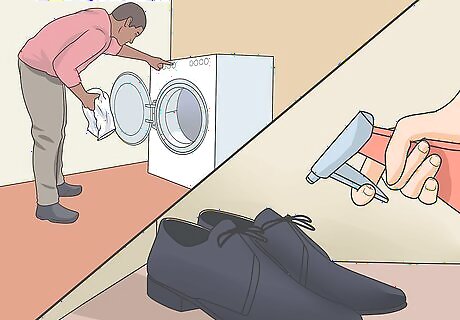
Disinfect clothes, tools and shoes. Anything that you use on your feet while infected must be disinfected with bleach or another cleaner. This includes nail tools, shoes, socks and anything else that has touched your feet. The last thing you want is to re-infect your feet after you have spent so much time trying to treat them. You should use very hot water and bleach to kill athlete's foot fungi in clothing and shoes.
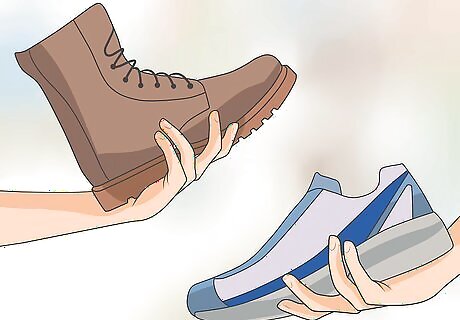
Wear wider shoes. Tight shoes do not allow air to flow around your feet. This can make it easy for fungus to grow. Something else you can do is to use lamb's wool between your toes to keep them separated when wearing your shoes. Lamb's wool can be found in your local drug store of foot care center.

















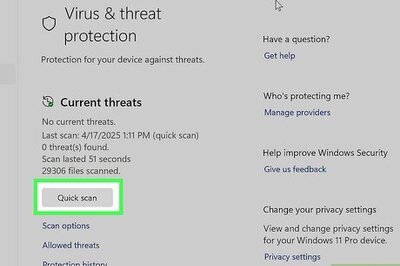


Comments
0 comment